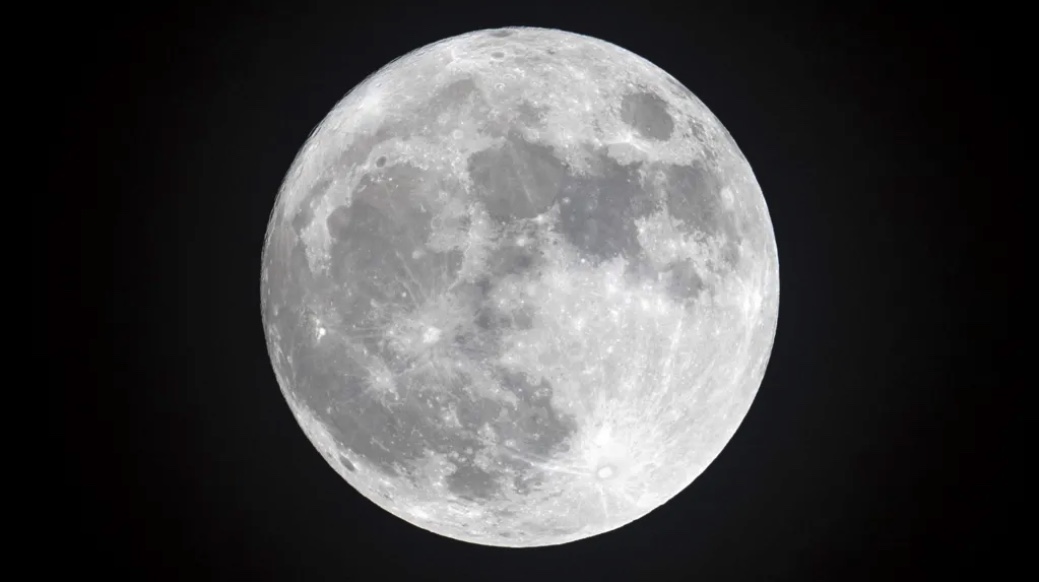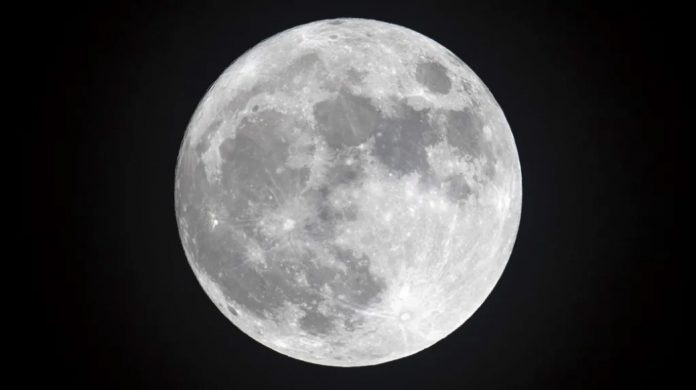นักวิทยาศาสตร์กล่าวว่าโลกกำลังจะมีดวงจันทร์ดวงที่สองเป็นการชั่วคราว ดวงจันทร์นี้ไม่ใช่ดวงจันทร์จริงๆ แต่เป็นดาวเคราะห์น้อยขนาดเล็กที่จะถูกแรงโน้มถ่วงของโลกดึงดูดและกลายเป็น “มินิดวงจันทร์” ชั่วคราว
ดาวเคราะห์น้อยนี้จะเข้ามาในวงโคจรรอบโลกตั้งแต่วันที่ 29 กันยายน และจะคงอยู่เป็นเวลาประมาณสองเดือนก่อนที่จะหลุดออกจากแรงโน้มถ่วงของโลกอีกครั้ง อย่างไรก็ตาม มินิดวงจันทร์นี้มีขนาดเล็กและมีแสงจางเกินกว่าที่จะมองเห็นได้ด้วยตาเปล่า เว้นแต่จะใช้กล้องโทรทรรศน์ระดับมืออาชีพ
ดาวเคราะห์น้อยดวงนี้ถูกพบครั้งแรกโดยระบบแจ้งเตือนล่วงหน้าการชนโลกของดาวเคราะห์น้อย (ATLAS) ของนาซาเมื่อวันที่ 7 สิงหาคม นักวิทยาศาสตร์ได้คำนวณเส้นทางการเคลื่อนที่ของมันและตีพิมพ์ผลการศึกษาในบันทึกวิจัยของสมาคมดาราศาสตร์อเมริกัน
ดาวเคราะห์น้อยที่นักวิทยาศาสตร์เรียกว่า 2024 PT5 นี้มาจากแถบดาวเคราะห์น้อยอรชุนา ซึ่งประกอบด้วยหินที่มีวงโคจรคล้ายกับโลก บางครั้งดาวเคราะห์น้อยเหล่านี้จะเข้าใกล้โลกมาก โดยอาจเข้ามาใกล้ได้ถึงระยะ 4.5 ล้านกิโลเมตรจากโลก
นักวิจัยที่เกี่ยวข้องกับการศึกษานี้กล่าวว่า หากดาวเคราะห์น้อยเคลื่อนที่ด้วยความเร็วค่อนข้างช้า ประมาณ 3,540 กิโลเมตรต่อชั่วโมง แรงโน้มถ่วงของโลกจะมีอิทธิพลมากพอที่จะดักจับมันไว้ชั่วคราว และนี่คือสิ่งที่จะเกิดขึ้นในสุดสัปดาห์นี้ ดาวเคราะห์น้อยขนาดเล็กนี้จะโคจรรอบโลกเป็นเวลาประมาณสองเดือน
ดร.เจนนิเฟอร์ มิลลาร์ด นักดาราศาสตร์และผู้จัดรายการพอดแคสต์ Awesome Astronomy กล่าวในรายการ Today ของ BBC ว่า ดาวเคราะห์น้อยจะเข้าสู่วงโคจรในวันที่ 29 กันยายน และคาดว่าจะหลุดออกจากวงโคจรในวันที่ 25 พฤศจิกายน
“มันจะไม่โคจรรอบโลกแบบครบวง แต่วงโคจรของมันจะถูกเปลี่ยนเล็กน้อยจากแรงดึงของโลก แล้วมันจะเคลื่อนตัวออกไปต่อ” เธอกล่าว
ดาวเคราะห์น้อยนี้มีความยาวประมาณ 10 เมตร ซึ่งถือว่าเล็กมากเมื่อเทียบกับดวงจันทร์ของโลกที่มีเส้นผ่านศูนย์กลางประมาณ 3,474 กิโลเมตร เนื่องจากขนาดเล็กและเป็นหินทึบแสง ทำให้ไม่สามารถมองเห็นได้จากโลก แม้จะใช้กล้องสองตาหรือกล้องโทรทรรศน์ทั่วไปก็ตาม
“กล้องโทรทรรศน์มืออาชีพสามารถจับภาพได้ ดังนั้นคงจะมีภาพสวยๆ ของจุดเล็กๆ นี้ที่เคลื่อนผ่านดวงดาวอย่างรวดเร็วให้เห็นทางออนไลน์” ดร.มิลลาร์ดกล่าว
มินิดวงจันทร์เคยถูกพบมาก่อน และเชื่อว่ามีอีกหลายดวงที่อาจยังไม่ถูกตรวจพบ บางดวงอาจกลับมาเยือนอีกครั้ง เช่น ดาวเคราะห์น้อย 2022 NX1 เคยเป็นมินิดวงจันทร์ในปี 1981 และกลับมาอีกครั้งในปี 2022
ดังนั้นไม่ต้องกังวลหากพลาดดวงนี้ไป นักวิทยาศาสตร์คาดว่า 2024 PT5 จะกลับมาโคจรรอบโลกอีกครั้งในปี 2055
“เรื่องราวนี้แสดงให้เห็นว่าระบบสุริยะของเรามีความเคลื่อนไหวมากแค่ไหน และยังมีอีกมากที่เรายังไม่ค้นพบ เพราะดาวเคราะห์น้อยดวงนี้เพิ่งถูกค้นพบในปีนี้เอง มีวัตถุอีกนับหมื่นหรืออาจนับแสนที่เรายังไม่ค้นพบ ซึ่งทำให้เห็นถึงความสำคัญของการสังเกตท้องฟ้าในยามค่ำคืนอย่างต่อเนื่องเพื่อค้นหาวัตถุเหล่านี้” ดร.มิลลาร์ดกล่าว
Earth to briefly gain second ‘moon’, scientists say

Get ready for a cosmic surprise this autumn – Earth is about to get a second moon, according to scientists.
A small asteroid is going to be captured by Earth’s gravitational pull and temporarily become a “mini-moon”.
This space visitor will be around from September 29 for a couple of months before escaping from Earth’s gravity again.
Sadly the second moon is going to be too small and dim to be seen, unless you have a professional telescope.
The asteroid was first spotted by NASA’s Asteroid Terrestrial-Impact Last Alert System (ATLAS) on 7 August.
Scientists worked out its trajectory in a study published in Research Notes of the American Astronomical Society.
The asteroid, which scientists refer to as 2024 PT5, hails from the Arjuna asteroid belt, which contains rocks that follow an orbit quite similar to Earth’s.
Occasionally, some of these asteroids get relatively close, getting as near as 2.8 million miles (4.5 million km) from our planet.
According to the researchers involved in the study, if an asteroid like this is moving at a relatively slow speed of around 2,200mph (3,540km/h), Earth’s gravitational field can exert a strong influence, enough to trap it temporarily.
Which is exactly what’s about to happen – starting this weekend, this small asteroid will spend about two months orbiting Earth.
Dr Jennifer Millard, astronomer and host of the Awesome Astronomy podcast, told the BBC’s Today programme that the asteroid would enter orbit on the 29th of September and then was predicted to leave on 25 November.
“It’s not going to complete a full revolution of our planet, it’s just going to kind of have its orbit altered, just twisted slightly by our own planet and then it’ll continue on its merry way,” she said.
The asteroid is approximately 32ft (10m) long, which is tiny in comparison to Earth’s moon, which has a diameter of approximately 3,474km.
Because it is small and made of dull rock it will not be visible to people on earth even if they use binoculars or a home telescope.
“Professional telescopes, they’ll be able to pick it up. So you’ll be able to look out for lots of wonderful pictures online of this little dot kind of moving past the stars at great speed,” said Dr Millard.
Mini-moons have been spotted before, and it’s thought many more are likely to have gone unnoticed.
Some even come back for repeat visits, the 2022 NX1 asteroid became a mini-moon in 1981 and again in 2022.
So don’t worry if you miss this one – scientists predict 2024 PT5 will also return to Earth’s orbit again in 2055.
“This story highlights just how busy our solar system is and how much there is out there that we haven’t discovered, because this asteroid was only discovered this year.
“There are tens of thousands, if not hundreds of thousands, of objects out there that we haven’t discovered and so I think this highlights the importance of us being able to continually monitor the night sky and find all of these objects,” said Dr Millard.
By Maddie Molloy, BBC Climate & Science

















